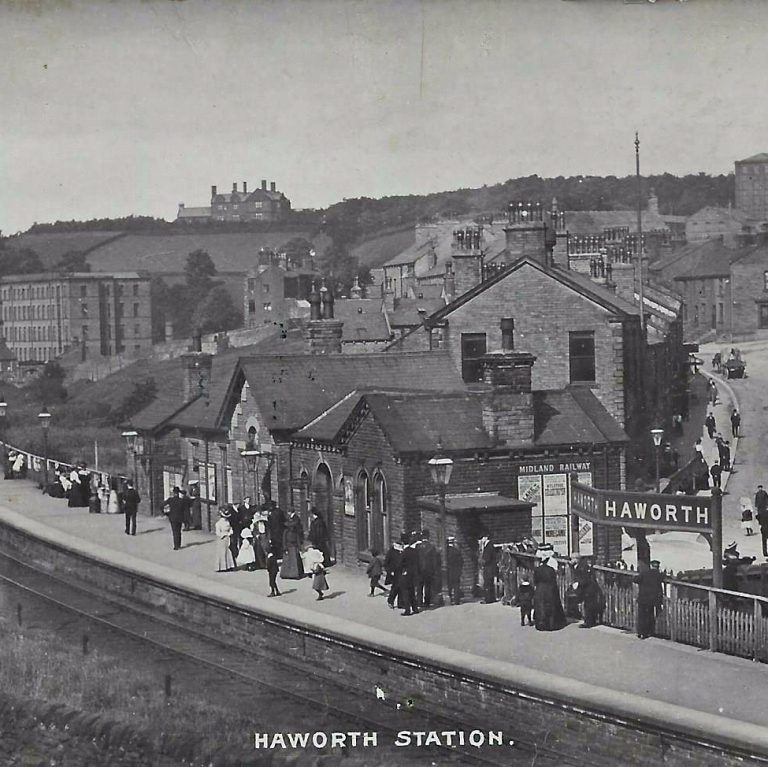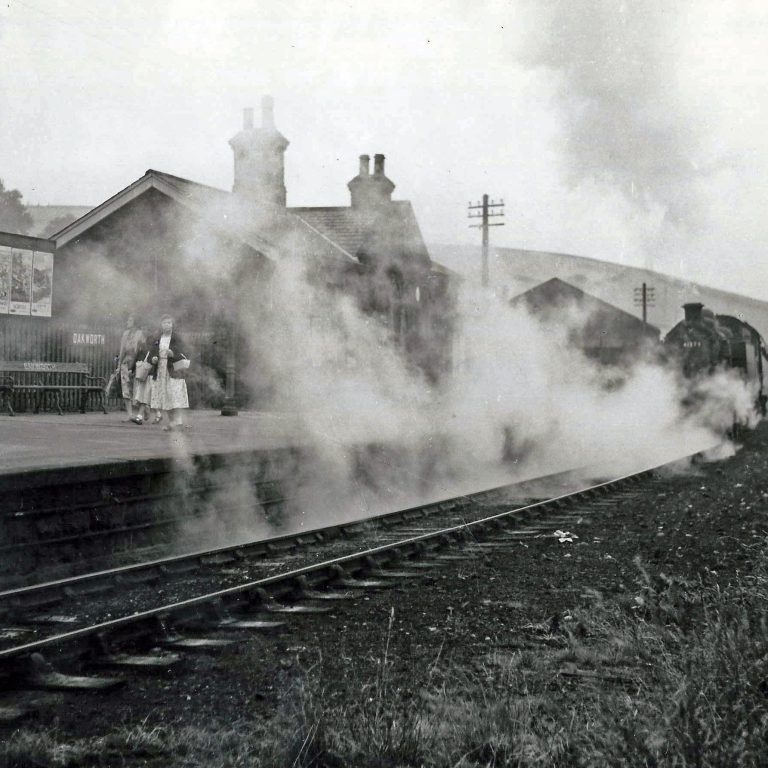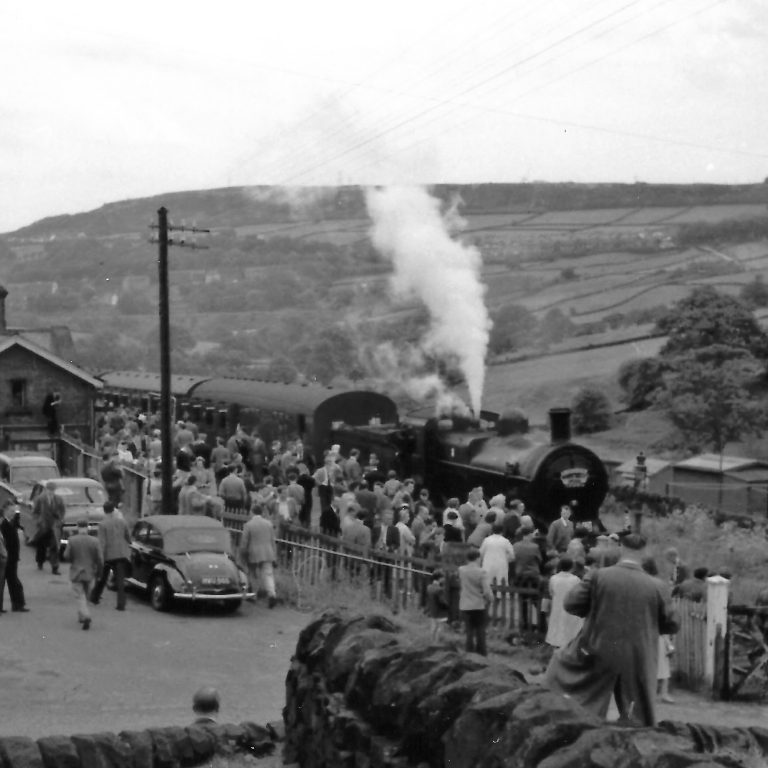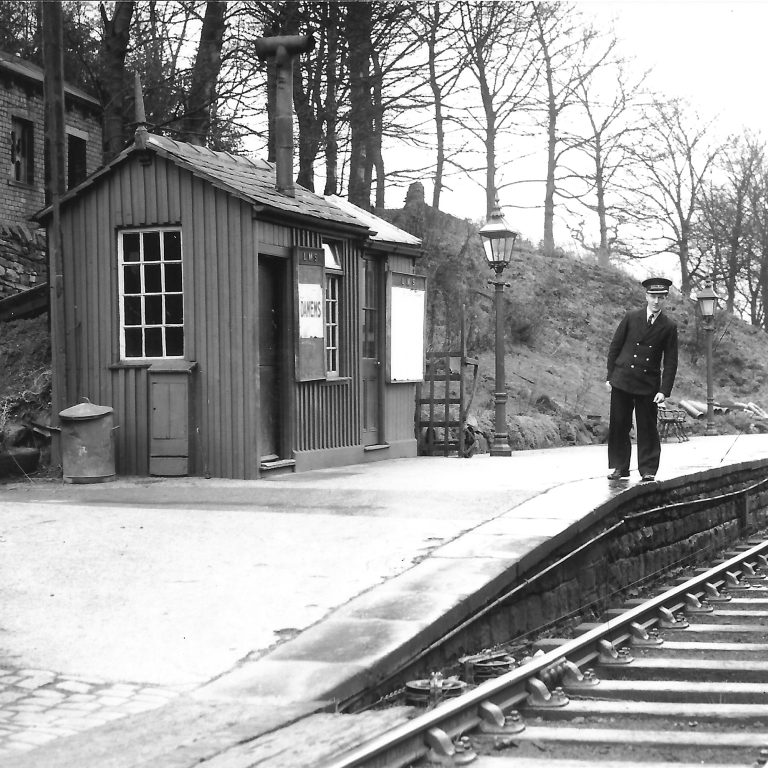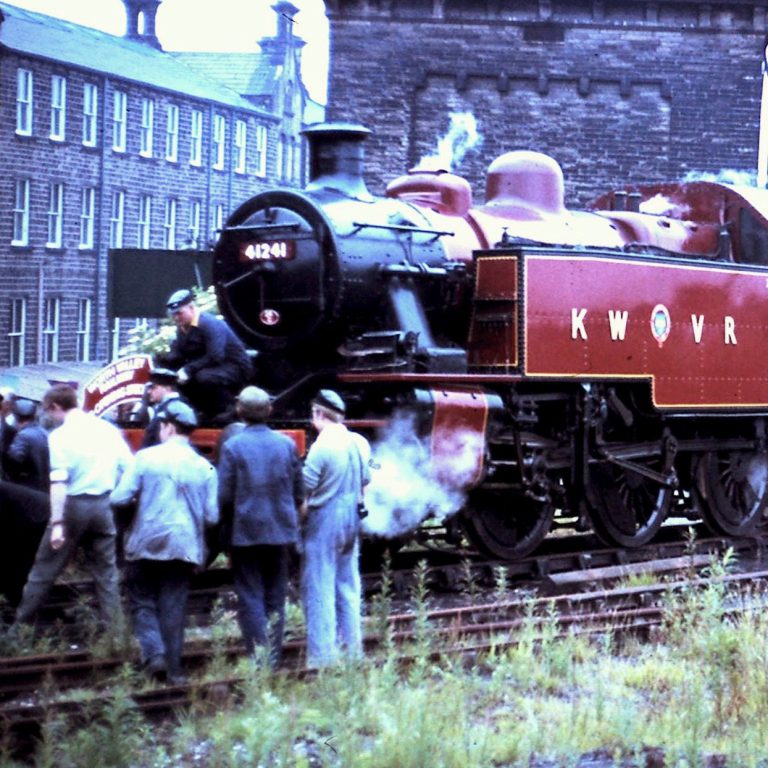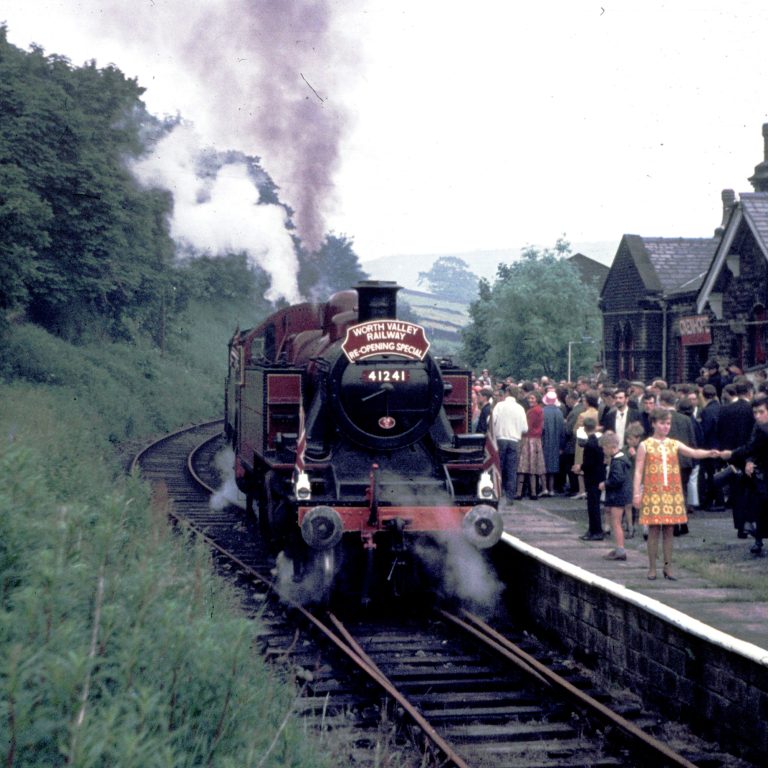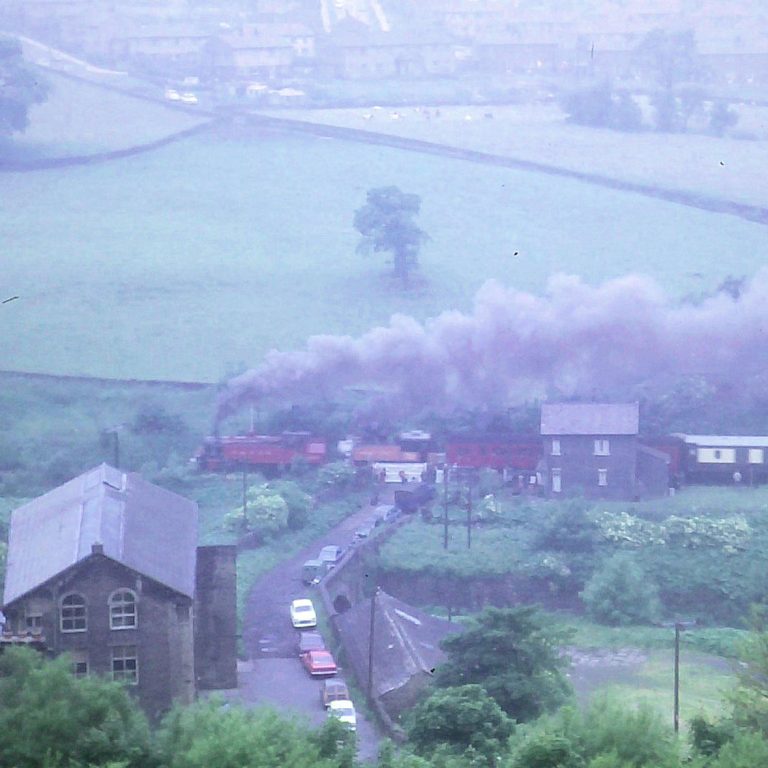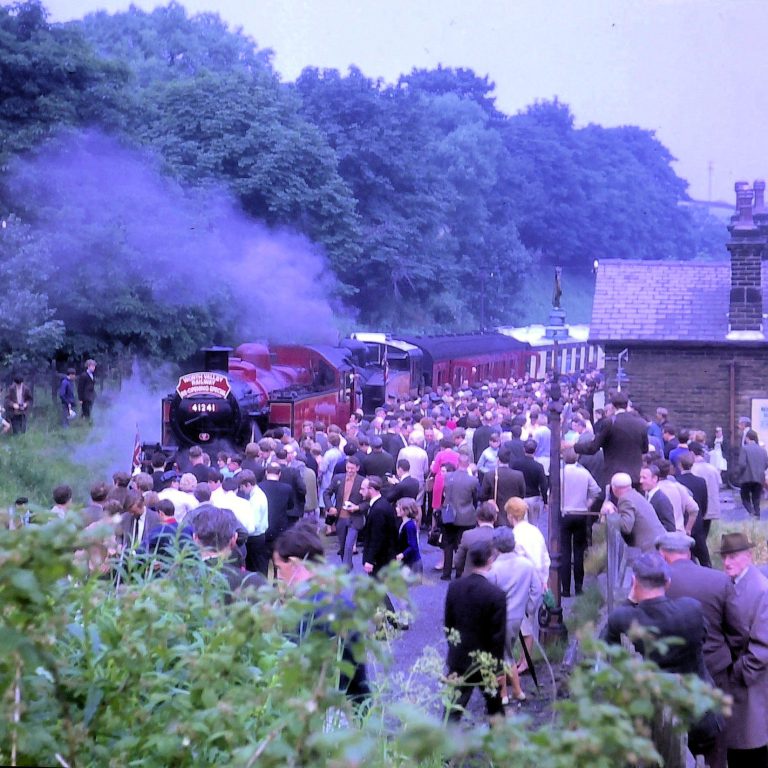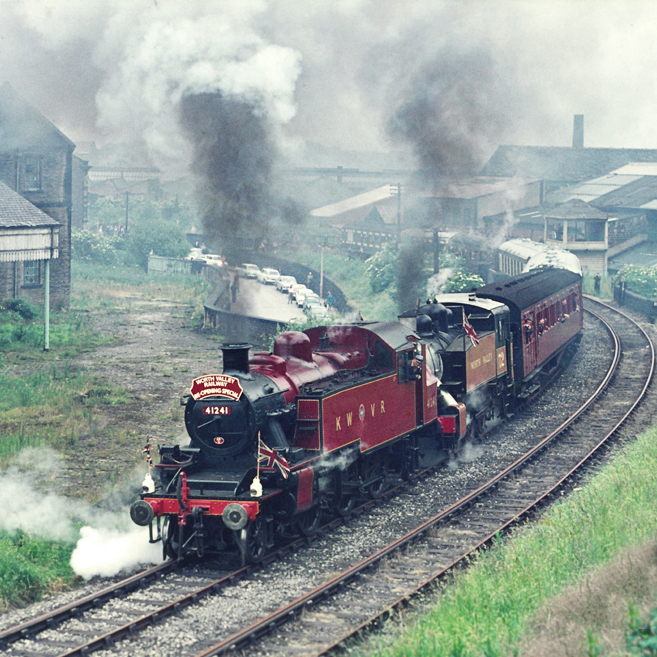Over 150 years of history of the Keighley & Worth Valley Railway
The Worth Valley branch out of Keighley climbs up the valley serving several small Pennine villages along the way. At Oakworth, the railway leaves the valley of the River Worth and enters the valley of Bridgehouse Beck, wherein lie Haworth and the line’s terminus at Oxenhope.
The line opened in 1867, funded predominantly by wealthy local mill owners. Within a very short time, the railway became part of the Midland Railway until in 1923 at the Grouping, it was absorbed into the new London Midland and Scottish Railway. Upon Nationalisation in 1948, the line became part of British Railways, and with its fortunes declining with the rise of competition from the roads, the branch closed in 1962.
A Preservation Society was formed which created a Company to buy the line outright, lease access to Keighley station and operate a regular public service. After many years of volunteer struggle, the line re-opened to passenger traffic in June 1968, although that dream of operating a regular public service never came to fruition.
Over 150 years of history of the Worth Valley branch
For almost 100 years, the railway from Keighley to Oxenhope served the mills and people of the Worth Valley
The line was built between 1864 and 1866, opening in 1867, but with the operation of trains ‘franchised’ to the Midland Railway which operated the adjoining Bradford/Leeds – Skipton line. The Midland Railway eventually bought out the KWVR Company. In 1924 the Worth Valley branch line became part of the London, Midland & Scottish Railway and, when our railways were nationalised after World War 2, British Railways (BR) in 1948.
The steep gradient of the branch from Keighley has been a challenge for locomotives ever since the line opened on 15th April 1867. The sound of a steam locomotive tackling this climb echoes from the valley’s steep sides, while great clouds of steam add drama to the scene. Many of the woollen mills that once stood close to the line have been demolished, but a few remain as reminders that the textile industry was the reason why the line was built. Like the railway, the mills relied on coal, and the trains were able to bring hundreds of tons up the valley each week to keep the looms working by steam power. The five-mile journey is a powerful reminder of our industrial heritage, as well as being a unique way of enjoying the beautiful countryside immortalised by Charlotte, Emily and Anne Brontë.
BR’s economies closed the branch to passengers in December 1961 and to goods in June 1962, but local opposition was such that local people and railway enthusiasts joined forces to try and save it.
The KWVR in Preservation
The extensive local opposition to the Railway’s closure saw the rise of the Keighley & Worth Valley Railway Preservation Society and, by their efforts, the railway reopened on 29th June 1968.
Diesel railcars were purchased to operate a daily passenger service, a diesel locomotive to work goods trains and several steam locomotives and carriages to operate a tourist service.
Having reopened in 1968, the Worth Valley branch line has been operated and managed almost entirely by qualified volunteer members of the Preservation Society ever since. Whilst the UK rail network was privatised much later, it is not particularly recognised that the sale of the Worth Valley branch was the first privatisation of any part of British Railways and the six-year legal battle to transfer ownership was a testament to this. It is amazing to think now, but the new KWVR did not have to raise the thousands of pounds upfront to buy the Line from BR, we paid them in instalments over the following 25 years – with no interest, simply the cost of the Branch. We paid BR the final instalment in 1992.
The six-year closure led to the line’s goods and 150,000 local passengers finding other means of transport. However, a weekend morning diesel ‘shopper’ service proved viable together with a steam train service from mid-morning with daily steam train services throughout the summer and public holiday weeks. Residents of the Valley can now apply for a special pass which gives them greatly reduced fares and provides a convenient alternative to the bus, especially for those with prams and bulky goods.
Today’s passengers could well be forgiven for thinking that the KWVR has always been the clean and well-maintained place you see today. However, things were very different back in 1962 when BR closed the line and everything was left to rot away or suffer at the hands of vandals. It took six years of hard work and tireless negotiations by volunteers of the Preservation Society before passenger trains finally ran again.
The Railway today serves a dual purpose. Whilst by far the majority of its passengers travel on it for its own sake, a significant minority use it as a means of transport to reach Haworth, or to go walking on the moors. It forms the credible and convenient connecting route between the Aire Valley line at Keighley and the Calder Valley line at Hebden Bridge, the gap being covered by a highly scenic hourly bus service that is worth doing just for its own sake. This runs from outside Ingrow, Haworth and Oxenhope stations and terminates in the station forecourt at Hebden Bridge.
In the years since its reopening, not only has the KWVR developed into one of the country’s premier ‘heritage’ railways, it has continued a tradition of service to the communities along the Worth Valley and those who use the line to visit the stunningly beautiful surrounding countryside, operating rail services on more than 200 days per year.
In 2018, the KWVR celebrated its 50 years of operating the line between Keighley & Oxenhope, and has now owned and operated the branch longer than any other organisation in its 153-year history.

